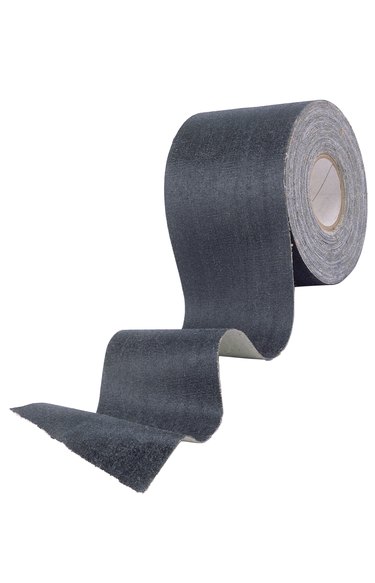 Duct tape can do nearly anything, including patching a waterbed. Image Credit: Comstock/Comstock/Getty Images
Duct tape can do nearly anything, including patching a waterbed. Image Credit: Comstock/Comstock/Getty Images
At last you own that free-flowing bag of water your parents were violently opposed to ever darkening their doorstep. Your waterbed sloshes and simulates the incoming tide each time you roll over or get out of bed. When the day comes that your bed springs a leak because you fell asleep with keys in your pocket, you can spring into action with homemade patches to fix the leak. However, even the most loyal of waterbeds wear out one day, and there's a point when you have to say goodbye to your old waterbed. A mattress that is more than a few years old or has several large holes is beyond saving.
Duct Tape
Long before duct tape became universally known, it was enlisted to aid in World War II. Duct tape was designed to be a waterproof patch for drinking canisters, cracked windows and army vehicles. Johnson & Johnson added a variety of plastic coatings and adhesives to medical tape to create the magical material known as duct tape.
Before applying duct tape to your waterbed, empty it out and let it dry. Clean the application area with alcohol. Cut a section of duct tape that overlaps at least 1 inch around the leak and carefully apply it.
Adhesives
On the remote chance your home does not contain duct tape, you can use an adhesive and a patch to fix your bed. Drain and dry the bed out, since most adhesives stick better to a surface that's not wet. Epoxy, JB Weld and silicone bathroom caulk have been used as adhesive for homemade waterbed patches.
Epoxy and JB Weld require the mixing of two separate chemicals that bond extremely tightly when they harden. Epoxy can be purchased in a dispenser with a mixing chamber to contain the mess, but JB Weld has to be mixed prior to use. Silicone bathroom caulk can be applied as soon as the mattress is dry and the hole is cleaned. It generally requires 36 hours to cure.
Heavy Patches
Properly applied, nearly anything made of thick plastic or vinyl can be used to patch a leaking waterbed. Vinyl shower curtains, old pieces of air mattresses and heavy plastic bags will work when cut about 2 inches larger than the hole in the waterbed and adhered with one of the previously mentioned adhesives. Don't fill the bed up immediately, however, since those adhesives have to cure.
Desperate Measures
Sometimes, there is just not a handy section of recycled shower curtain or mattress to be found. In this case, you can craft a patch out of several layers of plastic resealable kitchen bags, heavy garbage bags or even scraps of vinyl flooring (with the shiny side facing the leak). Raid your pool toys for pieces of leaky beach balls and other inflatables.
You may be able to stop a small leak temporarily with a bead of caulk if high-quality vinyl patch material is not available. A makeshift patch of this nature is not likely to hold for long, so look for a replacement patch as soon as possible.


